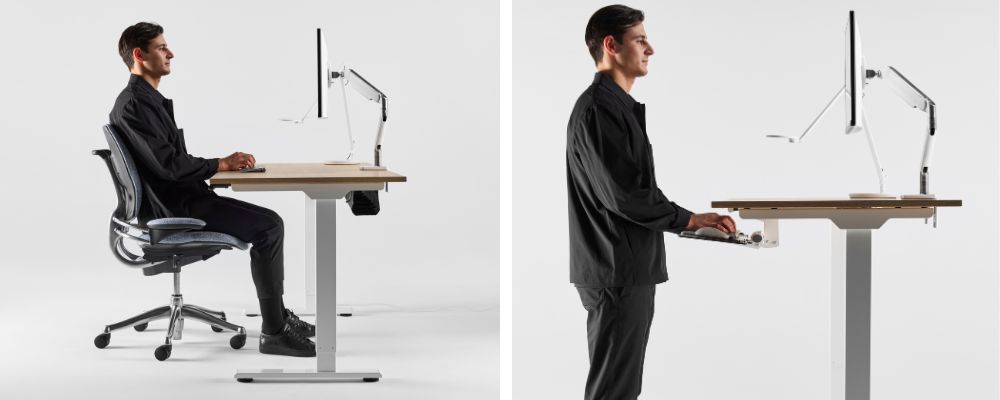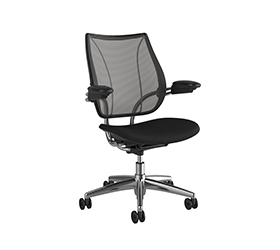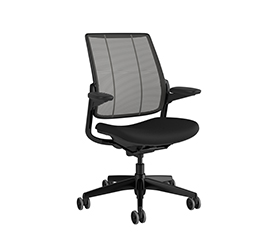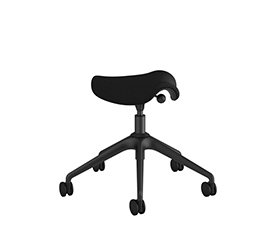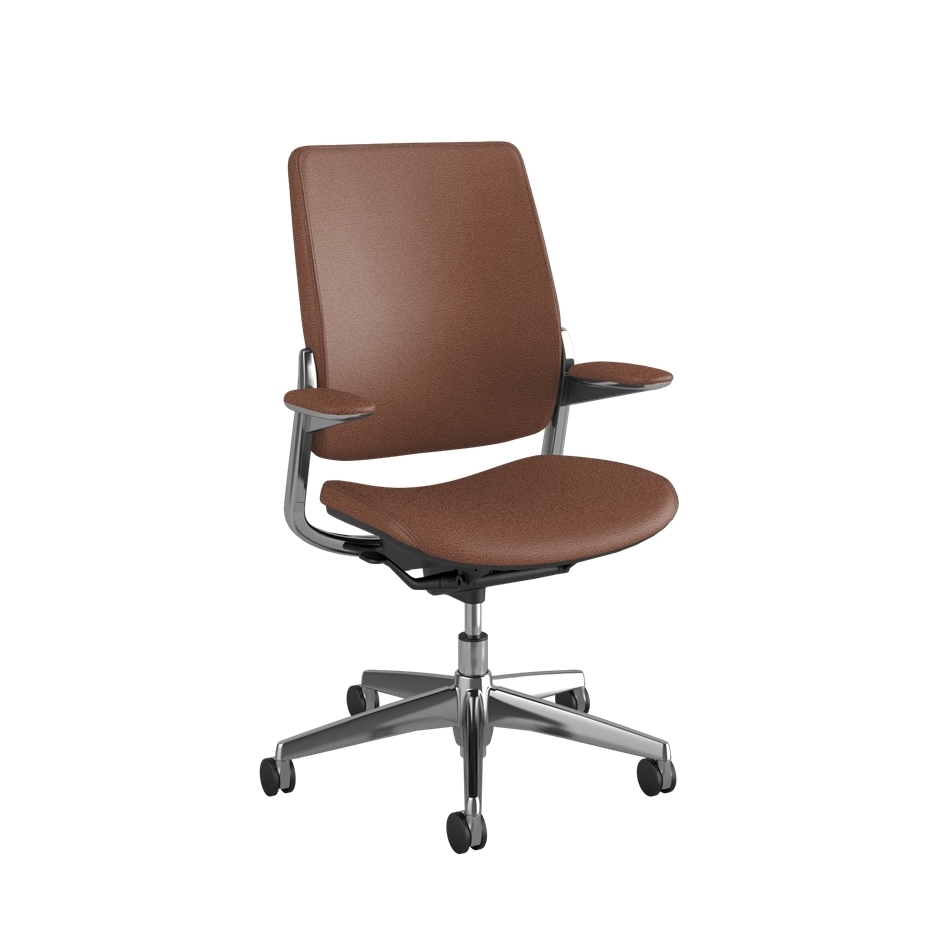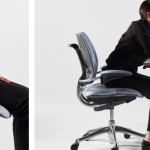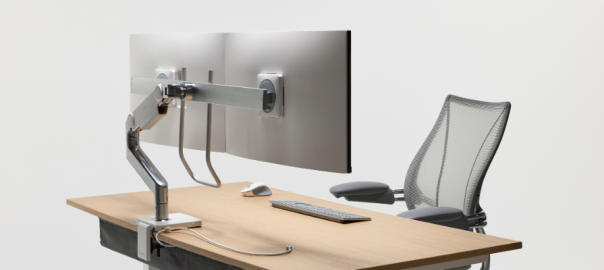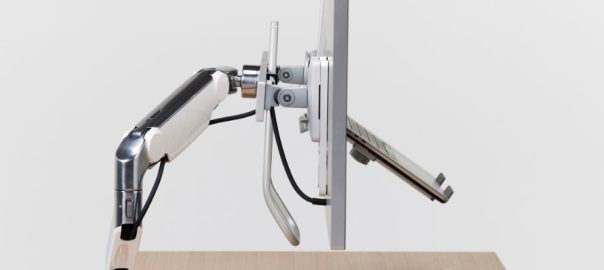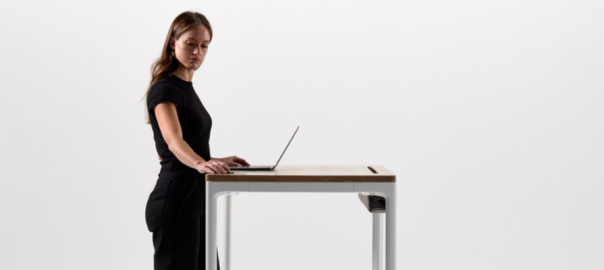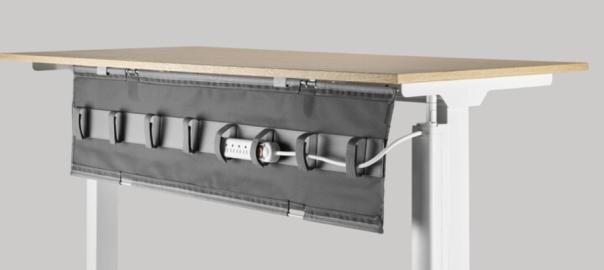Poor posture can have significant consequences, leading to chronic pain in your back, shoulders, and other body parts. It can also cause fatigue, reduce flexibility, and lead to multiple long-term health issues, such as spinal misalignment and poor circulation. Furthermore, poor posture can affect your confidence and concentration levels.
Fortunately, with some practical adjustments, you can permanently fix your posture and enjoy the benefits of ergonomics. Through this guide, we aim to take you through actionable steps on how to correct posture and choose the right type of office chair to support your alignment.
From choosing the right type of office chair to implementing effective exercises, you’ll learn how to improve posture and address the adverse effects of poor alignment. So, read along!
What Constitutes Poor Posture?
Poor posture is characterised by misalignment and imbalance in the way you sit, stand, or move. It often results from repetitive behaviours, lifestyle habits, or physical conditions that disrupt your body’s natural alignment. When correct posture is compromised, it can lead to multiple symptoms and long-term health issues.
Poor Posture Symptoms
Some symptoms of poor posture are:
- Rounded Shoulders: These strain the neck and upper back muscles and limit lung capacity, potentially causing discomfort and breathing issues.
- Forward Head Posture: Here, your head juts forward from the natural alignment of your spine. This can strain the neck muscles, lead to headaches, and affect your spinal alignment.
- Hunchback (Kyphosis): This condition often results from weak upper back muscles or prolonged poor posture and can lead to discomfort and reduced lung capacity.
- Slouching: Slouching involves leaning forward with a rounded back and shoulders. It places extra pressure on your spine and can cause neck and shoulder pain and potential digestive issues.
- Anterior Pelvic Tilt: This is characterised by a noticeable forward tilt of the pelvis and an inward bend of the lower back. It often results from weak hip flexors and can cause lower back pain and discomfort.
- Recurring Headaches: Poor posture, especially forward head posture, can strain neck muscles and contribute to tension headaches. It can also affect the blood flow to the brain.
- Muscle Fatigue: Poor posture puts undue stress on muscles, leading to fatigue. Weakened muscles from poor posture also struggle to support proper alignment, exacerbating the problem.
- Back and Neck Pain: Poor posture can cause extra strain on the muscles, joints, and spine, resulting in chronic pain and discomfort in the back and neck.
Causes of Poor Posture
Before finding out how to permanently fix posture, it is vital to understand the causes that lead to poor posture. Here are some pointers:
- Sedentary Lifestyle: Long periods of sitting, particularly with poor ergonomics, lead to slouching and weakened muscles. This is common in desk jobs and during leisure activities like watching TV or using a smartphone.
- Muscle Weakness and Imbalance: Weak core and back muscles cannot support your spine correctly, leading to poor posture. Inactivity and insufficient exercise contribute to this issue.
- Improper Lifting Techniques: Lifting heavy objects incorrectly can strain your back and disrupt spinal alignment. This is common in both professional settings and everyday activities.
- Carrying Heavy Bags: Carrying heavy weight on one shoulder can strain neck and shoulder muscles, leading to imbalances and poor posture.
- Ageing and Osteoporosis: As you age, conditions like osteoporosis can weaken the vertebrae, leading to conditions such as kyphosis or a “dowager’s hump.”
- Tech Neck: Extended use of mobile devices and computers often leads to forward head posture, causing neck and upper back strain.
How Long Does It Take to Fix Posture?
Correcting poor posture is an ongoing process that typically takes a few weeks to several months. Immediate changes are unlikely, as bad posture habits often develop over the years. With consistent effort, including good sitting posture, regular stretching, and core-strengthening exercises, you may start noticing improvements within six to twelve weeks.
However, achieving significant and lasting results may take up to six months. Remember, building new muscle memory and habits requires patience and perseverance, and individual progress varies.
How to Correct Poor Posture: A Step-By-Step Guide
Whether you’re dealing with back pain tension or simply want to fix bad posture, implementing some simple yet effective exercises and adjustments can make a significant difference. Here’s how you can correct poor posture with actionable steps:
1. Child’s Pose
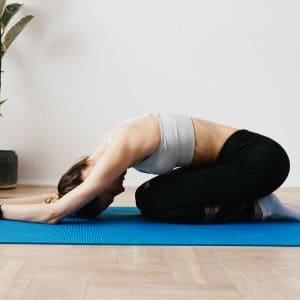
Child’s Pose stretches and lengthens your spine, glutes, and hamstrings and can help relieve tension in your lower back and neck.
To perform:
- Sit on your shins with your knees together and your big toes touching.
- Fold forward at your hips, extending your arms in front of you and sinking your hips back towards your feet.
- Rest your forehead on the ground or turn your head to one side.
- Breathe deeply into your rib cage and waist, holding the pose for up to 5 minutes.
2. Forward Fold
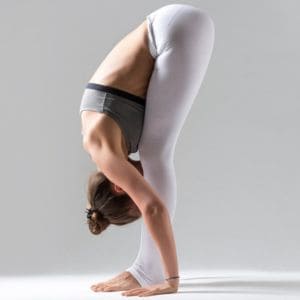
Forward Fold releases tension in your spine, glutes, and hamstrings, stretching your hips and legs.
To do this:
- Place your heels slightly apart and your big toes touching as you stand.
- Bend forward at the hips and allow your hands to touch the floor or rest on a block.
- Bend your knees slightly, allowing your spine to lengthen.
- Hold for up to 1 minute, keeping your chin tucked into your chest.
3. Cat-Cow
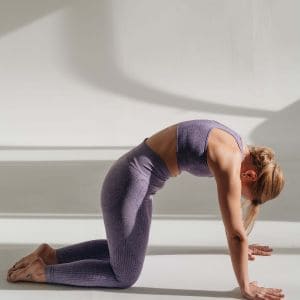
Cat-Cow helps relieve tension in your torso, shoulders, and neck while improving spinal mobility.
To perform:
- Get on all fours with your hands and knees evenly spaced.
- Inhale to arch your back and look up, dropping your abdomen.
- Exhale while rounding your back and tucking your chin.
- Repeat this for at least 1 minute.
4. Standing Cat-Cow
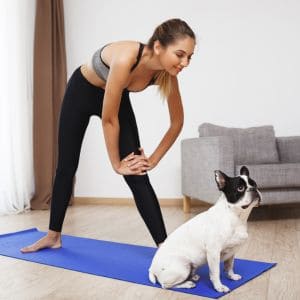
A standing variation of Cat-Cow, this pose helps loosen tightness in your back, hips, and glutes.
To perform:
- Stand hip-width apart with a little bend in your knees.
- Extend your hands in front or place them on your thighs.
- Round your spine and then lift your chest, alternating between the two positions.
- Hold each position for five breaths and continue for a few minutes.
5. Chest Opener
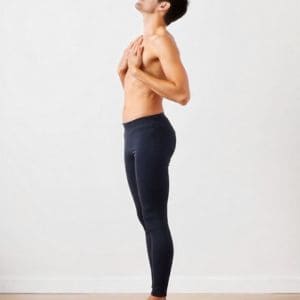
This stretch is beneficial if you sit for long periods, which often causes chest tightness.
To perform:
- Stand with feet hip-width away.
- Lock your fingers behind your back, squeezing your palms together or using a towel as necessary.
- Lift your chest toward the ceiling while reaching your hands down.
- Breathe deeply and hold for five breaths, repeating at least ten times.
6. High Plank

High Plank strengthens your shoulders, glutes, and core, improving posture and reducing back pain.
To perform:
- Start on all fours, then straighten your legs and lift your hips.
- Engage your abdominal muscles and keep your back straight.
- Hold for up to 1 minute, keeping your neck long and your shoulders back.
7. Side Plank
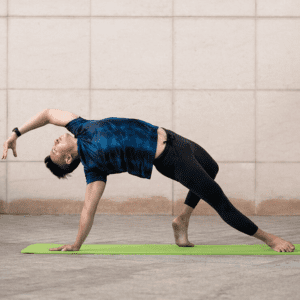
This exercise targets your side muscles and glutes, supporting better posture.
To perform:
- From a high plank position, shift your weight onto one hand and stack your ankles.
- Lift your hips and extend your free arm upwards, or place it on your hip.
- Hold for up to 30 seconds on each side.
8. Downward-Facing Dog
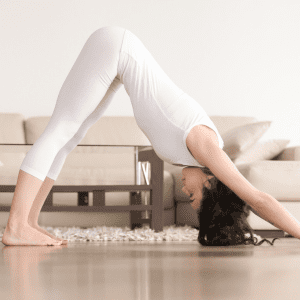
Downward-Facing Dog helps relieve back pain and strengthens your back muscles.
To perform:
- Start on all fours. Now tuck your toes and lift your hips toward the ceiling.
- Keep your spine long and press into your hands.
- Hold for up to 1 minute, maintaining a slight bend in your knees.
9. Pigeon Pose

Pigeon Pose opens up your hips, spine, and glutes, relieving tension.
To perform:
- Start on all fours, bringing one knee forward between your hands.
- Extend the opposite leg back and lower your torso over the bent leg.
- Hold for a minute, then switch sides.
10. Thoracic Spine Rotation
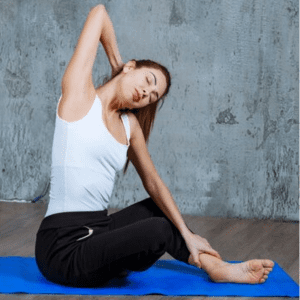
This stretch improves mobility and relieves tightness in the back.
To perform:
- From an all-fours position, rest on your shins and place one hand behind your head.
- Rotate your elbow toward the ceiling, stretching your torso.
- Repeat 5–10 times on each side.
Additional Tips for Improving Posture
- Adjust Your Workspace: Invest in ergonomic furniture, such as an office chair with a headrest and a height adjustable workstation. Proper desk posture is crucial for long hours at the computer. Make sure your desk and chair setup supports your back and promotes good posture.
- Stand More: Incorporate standing into your work routine by investing in a standing desk.
- Strengthen Your Back: Include exercises like Downward-Facing Dog in your workout routine to build strength and improve posture.
Ergonomic Products for Better Posture
Ergonomic solutions are designed to counteract the ergonomic hazards associated with prolonged sitting, helping you to correct poor posture and reduce discomfort. Here’s how you can optimise your workspace with essential ergonomic products.
Ergonomic Chairs
An ergonomic chair is foundational in addressing poor posture and ensuring comfort during long hours at your desk. These are specialised chairs for back pain relief that support your spine’s natural alignment, reducing the effect of poor posture on your body.
Key Features of Ergonomic Chairs:
- Adjustable Lumbar Support: Provides tailored support to your lower back, helping to correct posture and alleviate back pain.
- Customisable Seat Height: Ensures your feet are flat on the floor and your knees are at a right angle, contributing to proper desk posture.
- Adjustable Armrests: Keeps your arms in a comfortable, relaxed position to prevent strain and promote better posture.
- High-Quality Materials: Modern ergonomic chairs often use breathable fabrics and high-density foam to maintain comfort and support throughout the day.
Adjustable Standing Desks
A sit-stand desk offers a dynamic solution to counteract the issues associated with prolonged sitting. Switching between sitting and standing can alleviate muscle stiffness and improve circulation, addressing several aspects of ergonomic hazards.
Benefits of Standing Desks:
- Improved Circulation: Standing encourages movement and lowers the chance of developing circulatory disorders caused by prolonged sitting.
- Enhanced Energy Levels: Standing desks can help combat lethargy, boosting your energy and productivity throughout the day.
- Reduced Risk of Chronic Diseases: Using a sit-stand desk regularly may reduce your risk of obesity and cardiovascular disease.
Footrests and Ankle Supports
Footrests and ankle supports are vital for providing comfort and proper alignment for your lower body while sitting. They help to relieve pressure on your back and legs, ensuring better overall posture.
Features of Footrests and Ankle Supports:
- Adjustable Height: Allows you to elevate your feet to achieve a more comfortable seating position.
- Supportive Design: Cushions your legs and ankles, reducing discomfort and enhancing circulation.
- Enhanced Stability: Prevents your legs from swinging or remaining in an uncomfortable position, which helps maintain correct posture.
Keyboard and Mouse Trays
Keyboard and mouse trays are crucial for maintaining a comfortable typing and mousing position, which is essential for fixing lousy posture. These trays help keep your wrists in a neutral position, reducing strain and promoting better ergonomics.
Benefits of Keyboard and Mouse Trays:
- Wrist Alignment: Keeps your wrists in a natural position, preventing repetitive strain injuries and promoting proper desk posture.
- Adjustability: Allows you to position your keyboard and mouse at the most comfortable height and angle for your body.
- Enhanced Comfort: Works in conjunction with ergonomic chairs and desks to create a well-rounded ergonomic home office setup.
Monitor Arms and Laptop Stands
Monitor arms and laptop stands are essential for positioning your screen at the ideal height and angle, which can significantly impact your posture. Also, keeping your screen at eye level helps to reduce neck strain and eye discomfort.
Benefits of Monitor Arms and Laptop Stands:
- Adjustable Height and Angle: Allows you to position your screen for optimal viewing, reducing strain on your neck and back.
- Flexible Design: Enables easy adjustments to accommodate different seating positions and personal preferences.
- Improved Focus: Proper screen positioning helps you maintain better focus and productivity by reducing physical discomfort.
Wrapping Up
Improving your posture doesn’t require drastic changes but relatively consistent, mindful adjustments. By incorporating these stretches and exercises into your everyday routine, you can effectively address and prevent poor posture.
Also, investing in ergonomic furniture, such as an office chair with a headrest and a sit-stand desk, can play a major role in enhancing your overall posture and comfort. However, remember that fixing poor posture is a gradual process, so stay patient and persistent.

